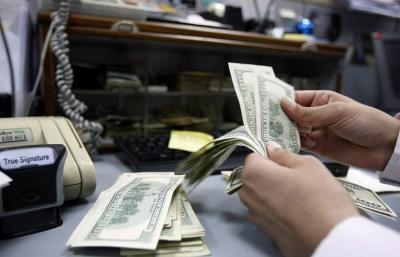What are the economic forecasts for 2023? This question does not puzzle many stakeholders, based on a series of indicators that allow for a somewhat pessimistic outlook for the coming year.
First: There is no doubt that the prolonged presidential vacancy negatively impacts the economy, especially with a caretaker government functioning at the bare minimum, thus managing urgent matters without any fixed plan or clear vision to exit the crisis that has entered its fourth year, without any fundamental solutions for its causes and repercussions.
Second: Based on the past period, especially since the preliminary agreement was signed with the IMF last April, it can be concluded that 2023 will not be significantly better regarding the required reforms, amidst sharp political divisions that indicate no substantial agreements on issues such as increasing public revenue, unifying exchange rates, capital control, restructuring banks, electricity reform, and other complex matters whose solutions are becoming increasingly complicated.
Third: It appears that the Governor of the Central Bank, Riad Salameh, continues his non-decisive tactical measures and circulars to buy additional time for the ruling system, without being compelled to take drastic actions, especially since his term ends next July. Restructuring banks is not a priority for him, particularly as it is tied to how losses are distributed. This distribution is a bitter struggle over who should bear the brunt of the heavy legacy: the state or the banks, with current losses estimated at 75 billion dollars and increasing daily.
Fourth: All indicators point to a continuation of rising inflation rates amid the depreciation of the lira, in addition to additional costs arising from the adoption of customs dollars and several fees and taxes based on platform prices. Moreover, there is imported inflation due to rising global prices; Lebanon imports 80% of its needs and is immediately affected by global inflation.
Fifth: In the context of stagflation, the economy does not generate new job opportunities. Thus, unemployment rates will remain around 40%, with the possibility of this rate rising gradually if conditions worsen further, in parallel with the loss of hope for a swift exit from the country’s pressing crisis, which is also affecting the private sector and individual initiatives.
Sixth: With the continued stagnation of the banking sector, the trend towards a "cash economy" will intensify, leading to further financial chaos outside regulatory oversight, which entails risks related to mafia operations, smuggling, and money laundering.
Seventh: The partial and total paralysis affecting public administration, official education, the Lebanese University, the judiciary, and other official sectors represents an additional negative factor that pressures the economy and society at large.
Eighth: With the erosion of the middle class and the evaporation of its savings, the disparity between a very small number that holds most of the disposable income and the vast majority—about 80% of the population—living in various forms of poverty becomes more pronounced. A quarter of the population is in extreme poverty (households with one working individual earning two dollars or less per day), plus more than 50% of the population (earning fourteen dollars or less per day) comprising groups facing multi-dimensional poverty, from deficiencies in meeting basic needs to lack of healthcare coverage, educational services, and electricity.
Ninth: With the near absence of additional international and Arab support due to delays in implementing reforms according to the agreement with the IMF, and the worsening crises without solutions, leading to a lack of confidence in a relatively better future, we will witness more legal and illegal migration, noting that those who have emigrated since 2019 exceed 350,000.
Tenth: While we may not witness security disturbances, indicators of social unrest confirm the likelihood of increased crime rates of various types, especially financial crimes, in addition to thefts and other social ills that "thrive" with rising rates of poverty and deprivation.




